Post by Grace Taylor, undergraduate Psychology major and interdisciplinary neuroscience minor at Portland State University. This spring, Grace returned to her former classroom at Southridge High School in Beaverton, Oregon as a TA for the IB Biology class.
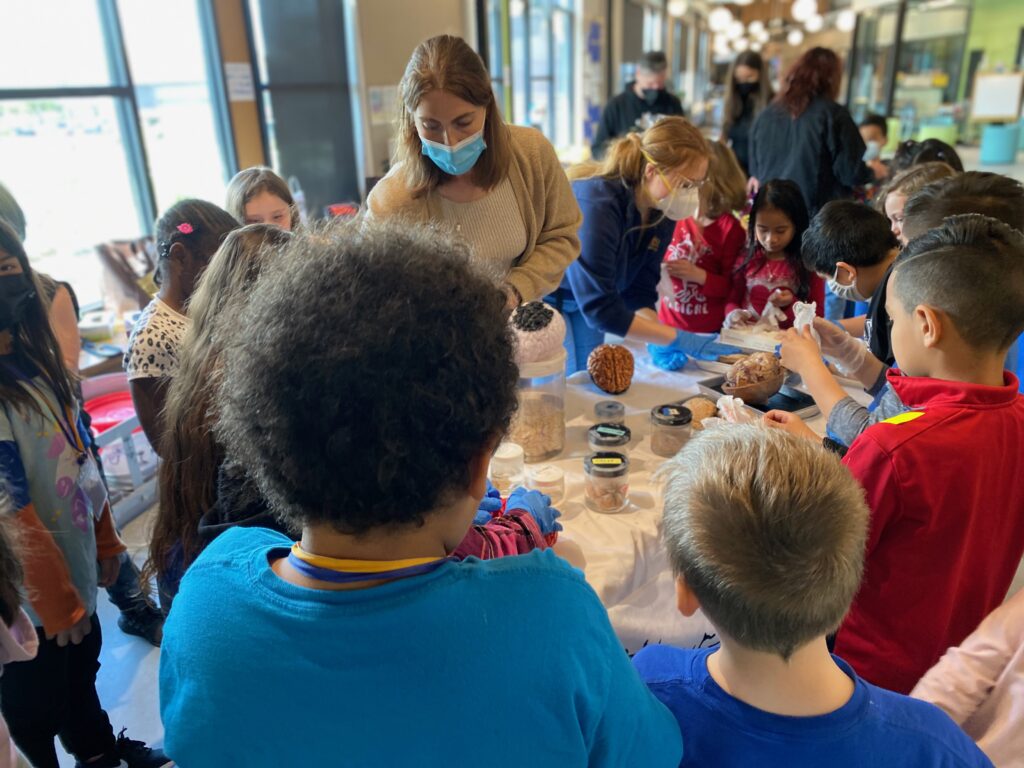
Nostalgia at Southridge High
For my Neuroscience minor outreach I spent time at Southridge High School in Beaverton working as a teacher’s assistant for the IB Biology class, and did multiple outreach trips with NW Noggin!
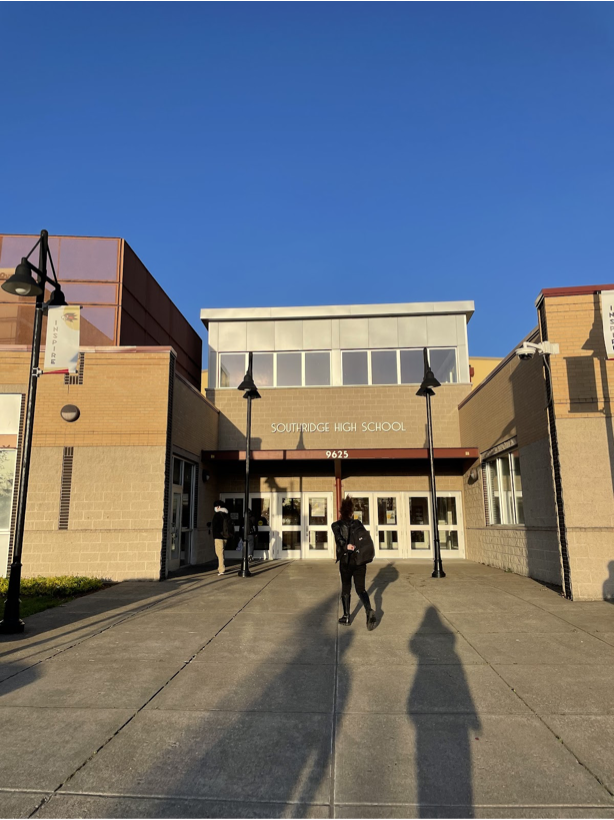
From DNA transcription to fly breeding Punnett squares, IB biology students are exploring the plant and animal kingdoms in depth at Southridge High School. Throughout the spring term of 2022, I have been volunteering at Southridge High School in Beaverton, Oregon as a teaching assistant (or TA).
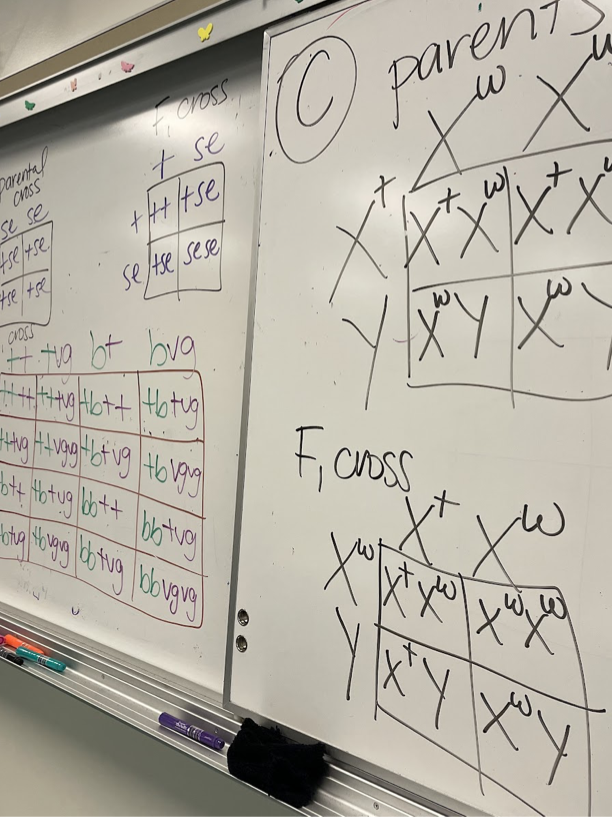
LEARN MORE: Punnett Square
LEARN MORE: How to use a Punnett Square
Entering my own Beaverton high school and walking into my old biology classroom brought back strong feelings of nostalgia and excitement. It was a complex experience, as I was overwhelmed with complex and powerful remembrances and emotions and excited and surprised to be back!
“Nostalgia arises from tender and yearnful reflection on meaningful life events or important persons from one’s past.”
— Ziyan Yang et al
A recent journal article addressed feelings of nostalgia from a neurological perspective, noting that self reflection, autobiographical memory, emotional regulation, and reward processing are all involved in my experience of nostalgia.
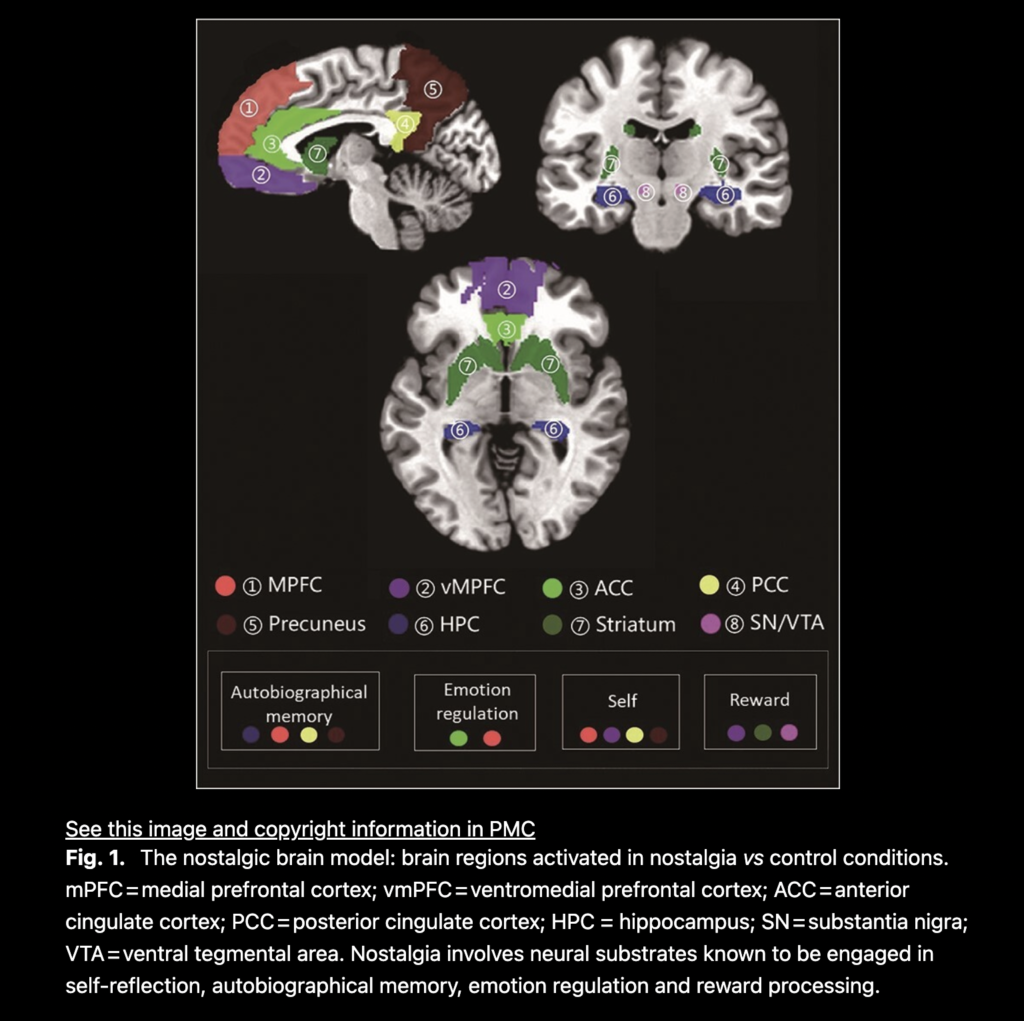
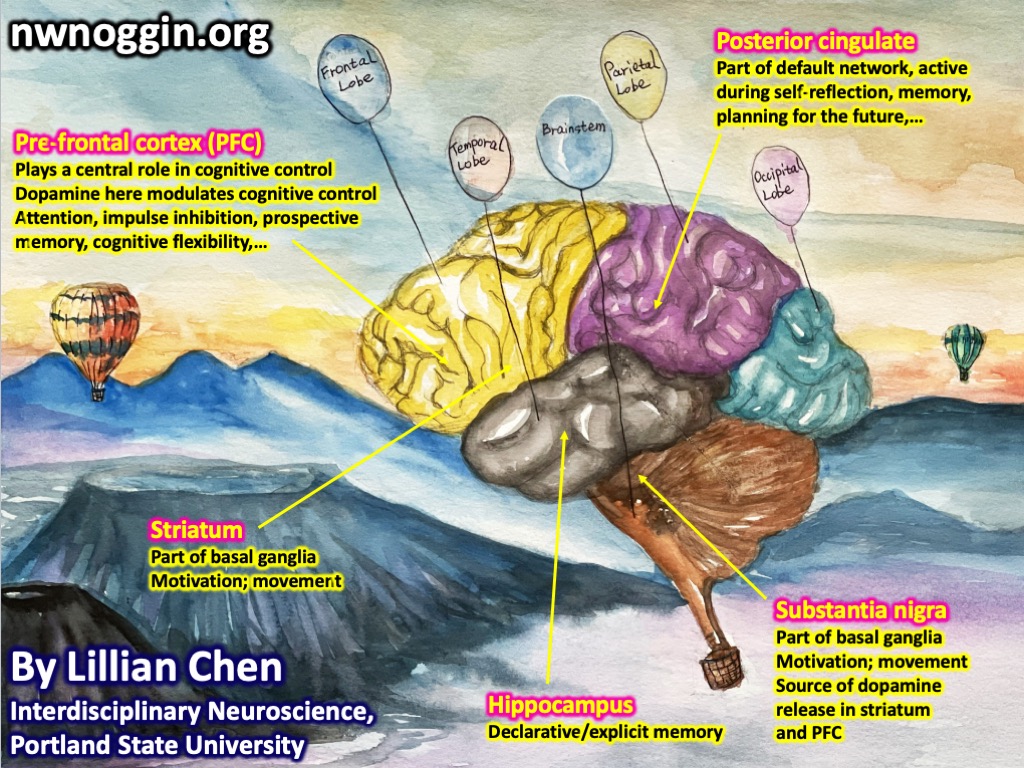
My prefrontal cortex, hippocampus, striatum, substantia nigra, and posterior cingulate cortex are all engaged. Another article explored how nostalgia increases our feelings of social connectedness, well-being, and perception of meaning in life. According to these researchers, this lets us engage with the present moment and activates motivation and reward centers in the brain.
LEARN MORE: Patterns of Brain Activity Associated with Nostalgia
LEARN MORE: Memory and reward systems coproduce ‘nostalgic’ experiences in the brain
LEARN MORE: Is Nostalgia a Past or Future-Oriented Experience?
LEARN MORE: The Nostalgia Bone (from NPR’s throughline)
This research helps to explain why being back at my old high school motivated me to engage with the classroom. Five years later, I thought I would remember more from these units, but I have been surprised by how much information my brain forgot. These students are learning complex lessons on genetic inheritance, DNA transcription and translation, as well as cell replication through mitosis and meiosis. Thankfully, after a quick refresher, I was able to catch up on most of the information and assist in answering questions and helping students with their assignments.
“Remembrance of things past”
— William Shakespeare
The IB class is full of curious students, asking questions ranging from, “Wait, how is meiosis different than mitosis?”, to, “What would happen if we bred a fluffy black chicken with a smaller white speckled chicken?”
Thankfully the documentary Chicken People was able to help us answer the former question. As a TA, I got to help answer these insightful questions, as well as put together a few assignments for the class.
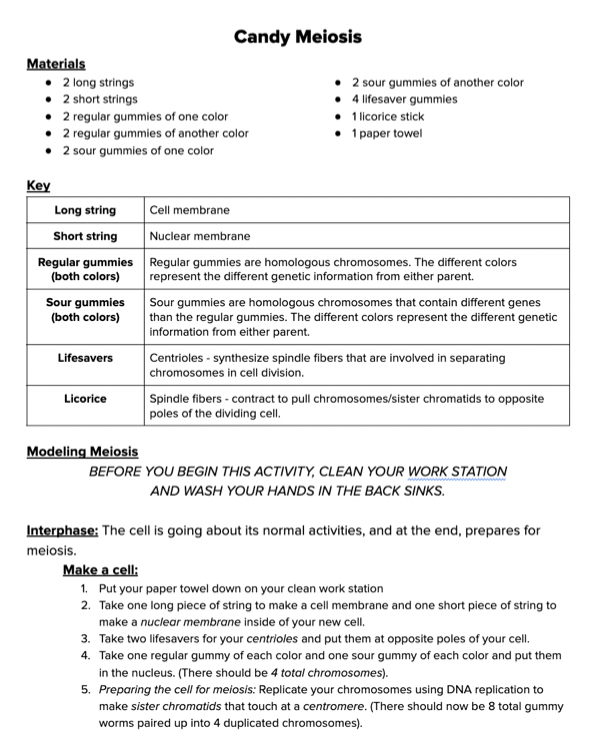
My favorite assignment was titled, “Candy Meiosis!” In this assignment, students learned the fundamentals of meiosis through modeling each step using different gummy worms to represent homologous chromosomes. During the crossing over step, students would break the gummy worms apart to represent variation in alleles and genetic variation in daughter cells.
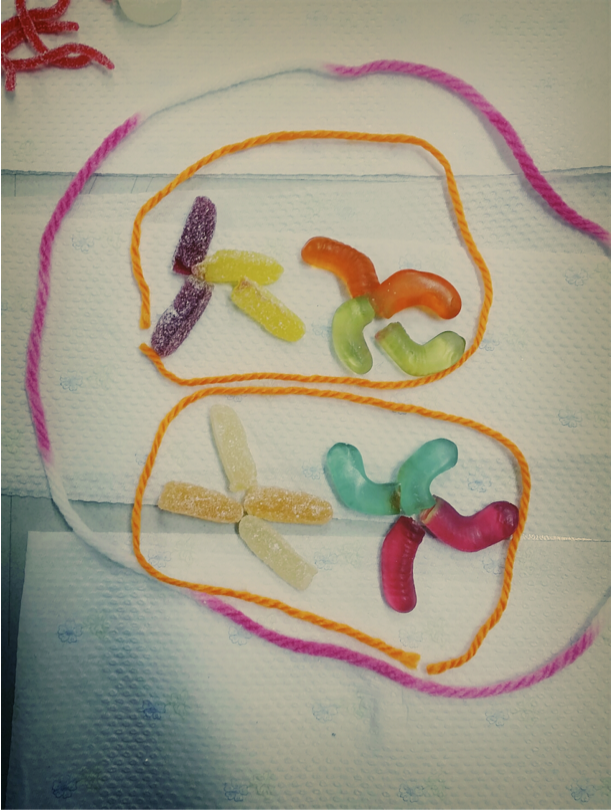
LEARN MORE: Tell the Difference Between Mitosis and Meiosis: Interplay Between Chromosomes, Cytoskeleton, and Cell Cycle Regulation
LEARN MORE: Meiosis: An Overview of Key Differences from Mitosis
In addition to creating assignments, I also got to explore the role of teaching through creating quizzes using old IB exam questions. It was an interesting experience researching relevant information to our specific classroom and finding questions that accurately depicted what information was being taught.
Outside of Southridge, I also got the opportunity to volunteer with Northwest Noggin by serving on outreach trips to various schools in the Portland area. Just this week, we got to visit another high school, Roosevelt. The tables are set up with different neuroscience activities ranging from building your own neuron cell using pipe cleaners to holding and examining real human brains!
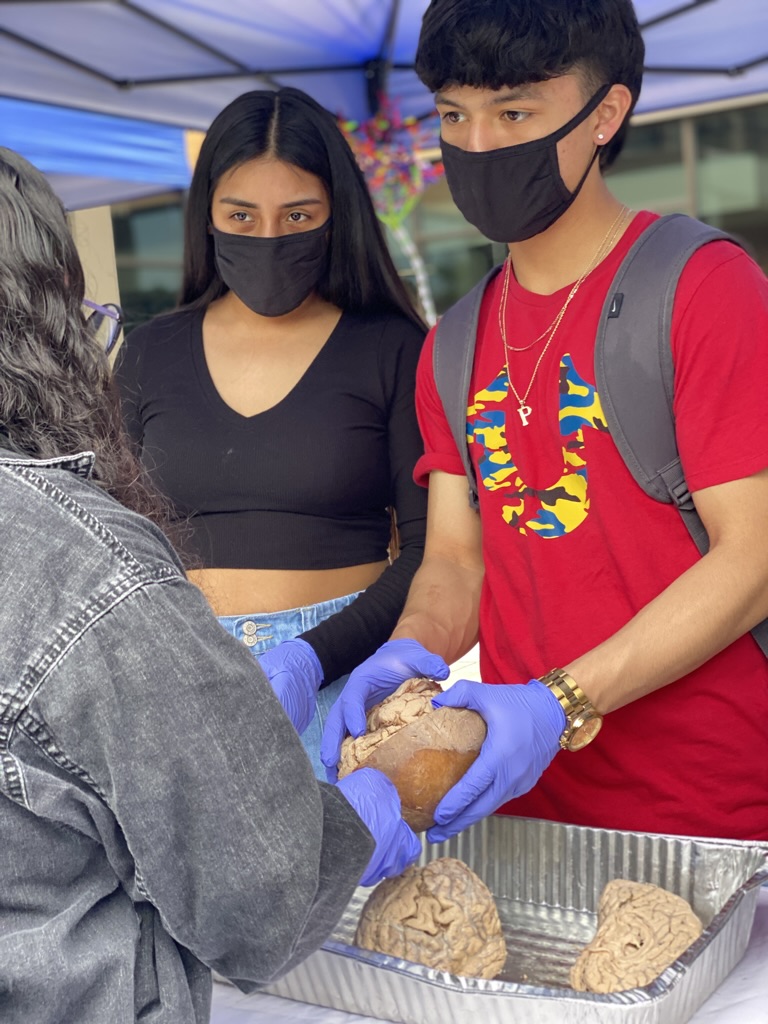
LEARN MORE: “What makes people struggle?”
Outreach at the Brain Table!
The brain table is always my favorite. As an anatomy and physiology student, I loved getting to explain the different parts of the brain and its functions. I love getting to witness the initial shock people have when we tell them these are real human brains. Their brief moment of disgust is quickly followed by intrigue and curiosity. Some people initially back away from the table stating, “I do NOT want to touch those.” After watching their peers holding the brains and learning about the anatomy, these same onlookers later re-approach the table to hesitantly pick up a piece of brain to examine themselves.
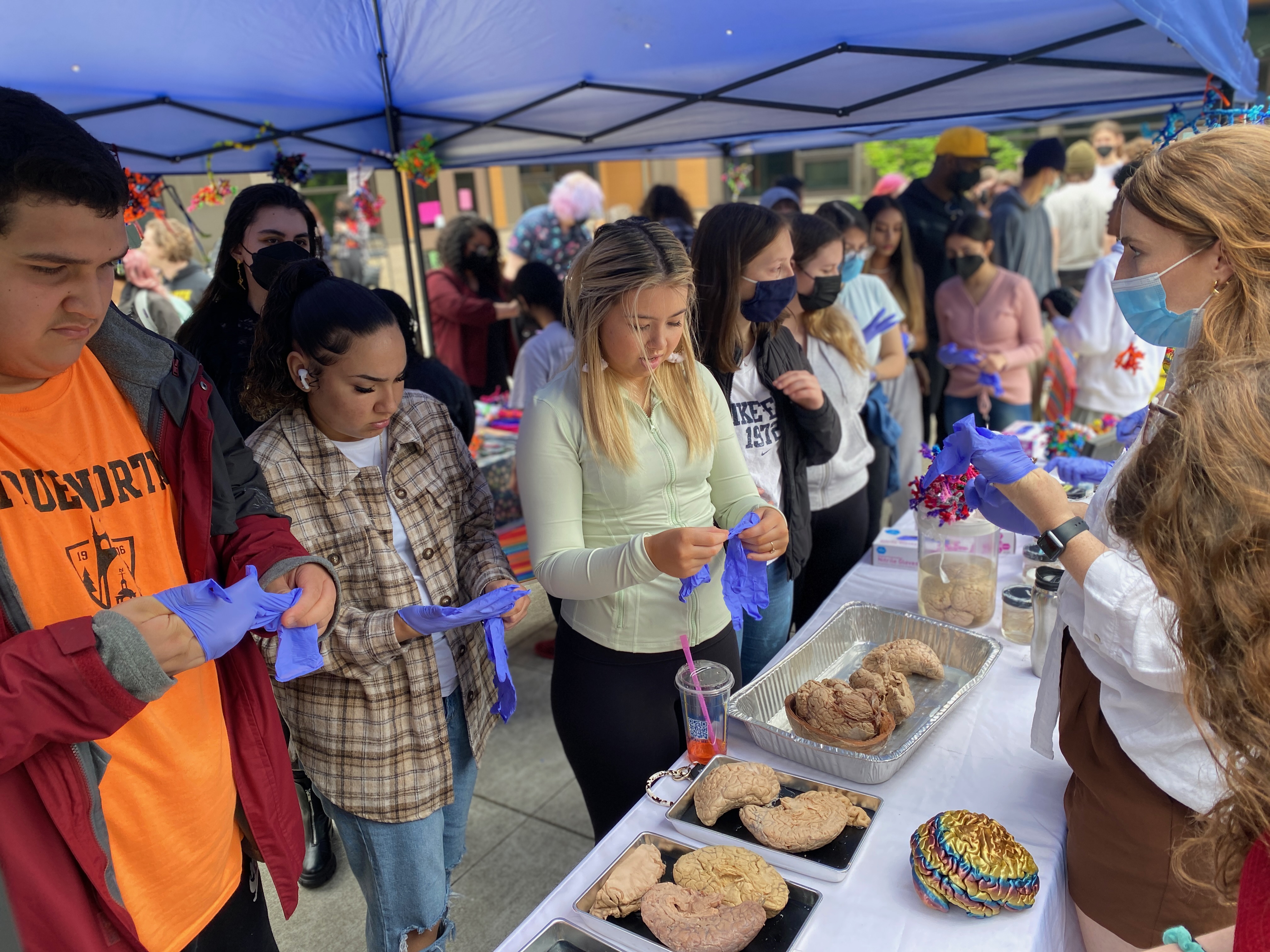
I found it interesting that this response was mimicked by every age group. Similar questions and reactions were posed by elementary school students at MLK Elementary in Vancouver, WA. At Portland’s annual NogginFest, both my fiancé and I attended. At age 27, he had never seen a real human brain before and had the exact same reaction as most of the students! His initial shock was again followed by curiosity and he got the courage to hold the brains! He ended up asking me questions about the brain the entire drive home.
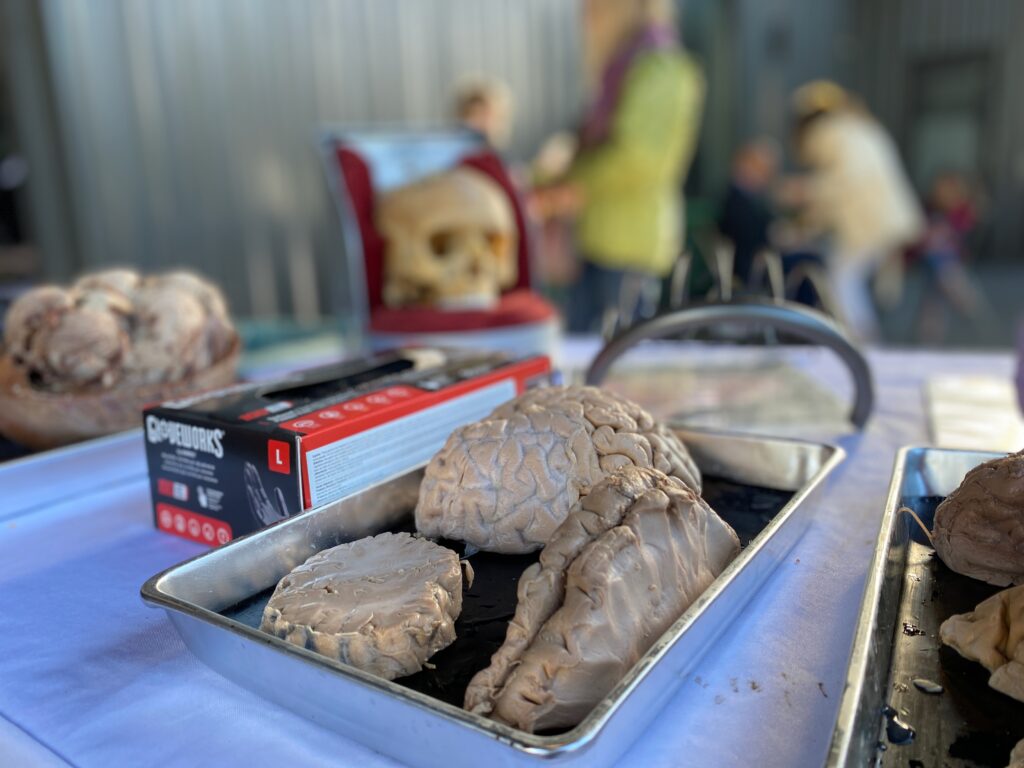
LEARN MORE: NOGGINFEST!
It’s so fascinating to witness how these experiences of witnessing and interacting with real human brains spark a new found curiosity and love for science in so many individuals. My favorite moments were watching people with no hesitation about holding the brains, but just pure fascination and delight. Even at the elementary level, certain kids would hold the brains with a huge smile on their face and not leave the brain table for the entire period of time.
Go places and connect
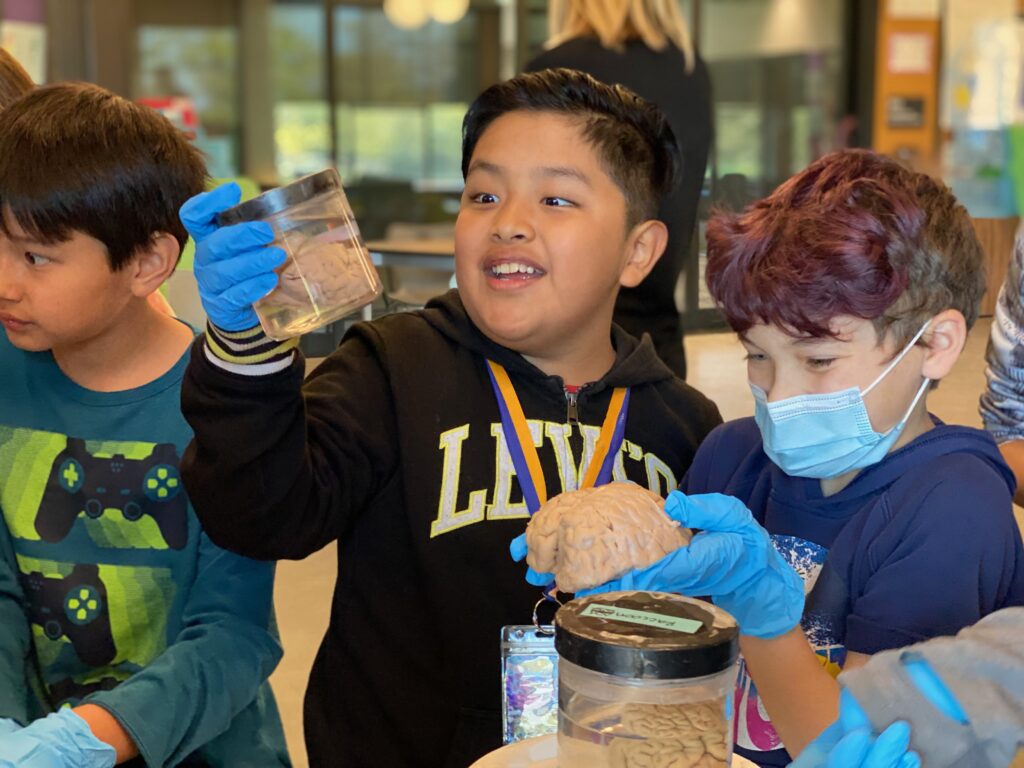
I wish I had this experience as a child to discover my love for neuroscience and have more opportunities to explore the wonders of the brain from a young age. Outreach has been so incredible and I hope kids around the Pacific Northwest continue to discover their own love and fascination – and perhaps some day nostalgia – for all things brain!


